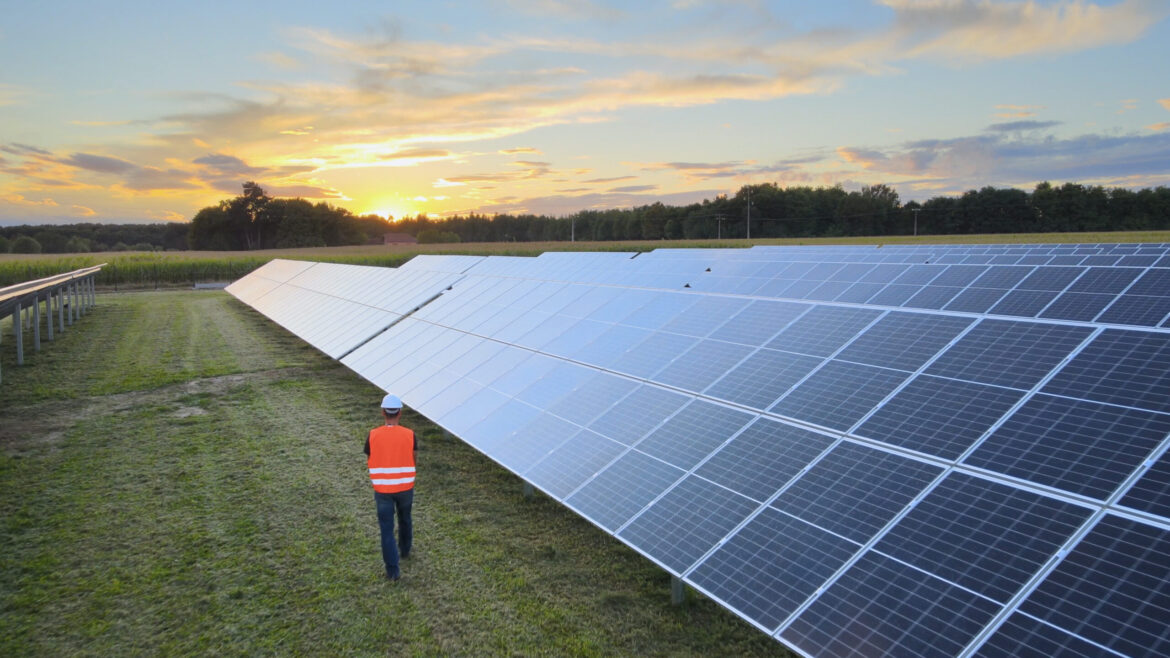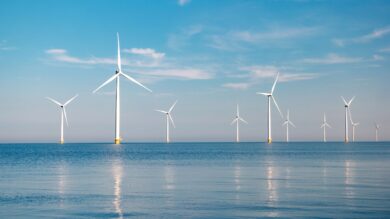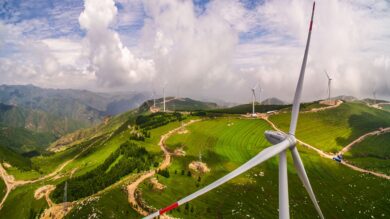How does solar work?
When the sun is shining, solar panels convert sunlight into DC (direct current) electricity. The solar inverter converts this electricity into AC (alternating current) power for use in your home. Your home appliances (fridge, dishwasher, pool pumps etc.) use this power instead of drawing power from the electricity grid.
Any excess electricity generated by solar panels but not used by appliances is sent back (exported) to the electricity grid or used to charge a solar battery. Electricity Retailers pay a feed-in tariff for any electricity sent back to the grid.
Solar generation, consumption and export is tracked and recorded through a smart meter, providing the data for electricity billing.
Solar systems are most effective when they are well positioned (north-facing is optimal, but not essential) and exposed to enough sunlight without obstruction by shade caused from trees, power lines or other structures.
The photovoltaic effect .
.
Solar power is the conversion of energy from sunlight into electricity, either directly using photovoltaics (PV) or indirectly using concentrated solar power. Photovoltaic cells convert light into an electric current using the photovoltaic effect. Concentrated solar power systems use lenses or mirrors and solar tracking systems to focus a large area of sunlight to a hot spot, often to drive a steam turbine.
Photovoltaics were initially solely used as a source of electricity for small and medium-sized applications, from the calculator powered by a single solar cell to remote homes powered by an off-grid rooftop PV system. Commercial concentrated solar power plants were first developed in the 1980s. Since then, as the cost of solar electricity has fallen, grid-connected solar PV systems’ capacity and production have grown more or less exponentially, doubling about every three years. Millions of installations and gigawatt-scale photovoltaic power stations continue to be built, with half of the new generation capacity being solar in 2021.
Process
The photovoltaic effect occurs in solar cells. These solar cells are composed of two different types of semiconductors – a p-type and an n-type – that are joined together to create a p-n junction. By joining these two types of semiconductors, an electric field is formed in the region of the junction as electrons move to the positive p-side and holes move to the negative n-side. This field causes negatively charged particles to move in one direction and positively charged particles in the other direction.
Figure 1. A diagram showing the photovoltaic effect.[3]
Light is composed of photons, which are simply small bundles of electromagnetic radiation or energy. These photons can be absorbed by a photovoltaic cell – the type of cell that composes solar panels. When light of a suitable
wavelength is incident on these cells, energy from the photon is transferred to an atom of the semiconducting material in the p-n junction. Specifically, the energy is transferred to the electrons in the material. This causes the electrons to jump to a higher energy state known as the conduction band.
 This leaves behind a “hole” in the valence band that the electron jumped up from.
This leaves behind a “hole” in the valence band that the electron jumped up from.
This movement of the electron as a result of added energy creates two charge carriers, an electron-hole pair.





